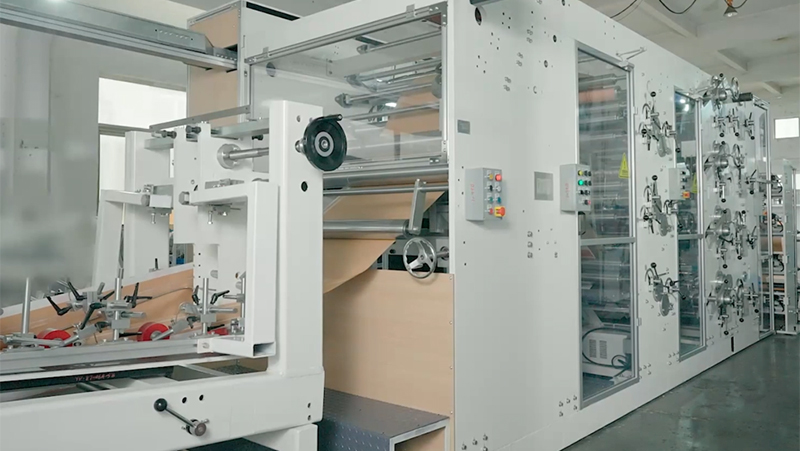A Comprehensive Guide to Paper Bag Machine Installation: Ensuring Efficiency and Precision
Release time:2025-05-24 Classification:Knowledge
The installation of a paper bag machine is a critical step in establishing a seamless production line for manufacturing high-quality, eco-friendly packaging solutions. Proper installation not only guarantees optimal machine performance but also extends equipment lifespan, reduces downtime, and ensures workplace safety. At Yideng Machinery, we specialize in delivering end-to-end installation services tailored to meet the unique needs of our clients. This article outlines the essential steps, best practices, and expert insights for a successful paper bag machine installation.

Pre-Installation Preparation: Laying the Foundation
- Site Assessment and Layout Planning
Before installation begins, a thorough evaluation of the production facility is necessary. Key factors include floor space, electrical supply, ventilation, and accessibility. The machine should be positioned to allow smooth material flow, operator mobility, and future maintenance access. Yideng Machinery’s technicians conduct on-site surveys to design layouts that maximize efficiency and safety. - Utility Requirements
Paper bag machines require stable power sources, compressed air systems, and sometimes hydraulic connections. Ensure voltage specifications match the machine’s requirements, and install surge protectors to prevent electrical damage. Compressed air lines must be free of contaminants to avoid affecting pneumatic components. - Safety Protocols
Establish safety zones around the installation area. Provide protective gear for personnel, including gloves, goggles, and ear protection. Clear signage and emergency stop buttons should be installed prior to assembly.
Step-by-Step Installation Process
- Unpacking and Component Inspection
Carefully unpack all machine parts and cross-reference them with the provided inventory list. Inspect components for damage incurred during transit. Yideng Machinery ensures all equipment is securely packaged and accompanied by detailed documentation to streamline this process. - Base Assembly and Leveling
Assemble the machine’s base frame on a flat, reinforced concrete floor. Use precision leveling tools to eliminate unevenness, as even minor tilting can cause misalignment or vibration during operation. Anchor bolts should be tightened to manufacturer specifications. - Mechanical Integration
Install core modules such as the feeding unit, printing station, folding mechanism, and gluing system. Lubricate moving parts as per guidelines to prevent friction-related wear. Yideng Machinery’s modular designs simplify this phase, allowing for quicker integration with minimal manual adjustments. - Electrical and Control System Setup
Connect motors, sensors, and programmable logic controllers (PLCs). Verify wiring against circuit diagrams to prevent short circuits. Calibrate touchscreen interfaces and test emergency stop functions. Our team emphasizes error-free wiring to ensure seamless communication between subsystems. - Pneumatic and Hydraulic Connections
Attach air hoses and hydraulic lines, ensuring leak-free joints. Adjust pressure regulators to meet operational requirements. For machines with servo-driven components, synchronize motion controls to maintain precision during high-speed production.
Post-Installation Testing and Calibration
- Dry Run and Parameter Adjustment
Conduct a trial operation without materials to check for abnormal noises or vibrations. Adjust tension settings, timing belts, and sensor sensitivity. Yideng Machinery’s engineers use advanced diagnostic tools to fine-tune parameters for peak performance. - Material Testing
Feed paper rolls into the machine and test multiple bag designs. Monitor the alignment of cuts, folds, and glue application. Optimize speed settings gradually to avoid overloading the system during initial runs. - Operator Training
Provide hands-on training for machine operators, focusing on startup/shutdown procedures, routine maintenance, and troubleshooting common issues. Yideng Machinery offers customized training programs to empower clients with in-depth operational knowledge.
Maintenance Tips for Long-Term Reliability
- Daily Checks: Inspect blades, belts, and bearings for wear. Clean adhesive residues to prevent buildup.
- Lubrication Schedule: Follow the manufacturer’s guidelines for greasing moving parts.
- Software Updates: Regularly update PLC firmware to access performance enhancements.
- Preventive Maintenance Contracts: Partner with Yideng Machinery for scheduled inspections to address potential issues before they escalate.
Why Choose Yideng Machinery for Your Installation Needs?
With decades of experience in paper bag machinery innovation, Yideng Machinery combines technical expertise with a customer-centric approach. Our installation services include:
- Turnkey Solutions: From site planning to final calibration, we handle every detail.
- 24/7 Technical Support: Access real-time assistance for uninterrupted production.
- Compliance Assurance: Machines meet international safety and environmental standards.
By entrusting your paper bag machine installation to Yideng Machinery, you invest in precision, reliability, and a partnership dedicated to your success. Contact us today to explore how our solutions can elevate your packaging production capabilities.
This guide underscores the importance of meticulous planning and professional execution during paper bag machine installation. With Yideng Machinery as your partner, you gain not just a machine, but a streamlined, future-ready production asset.






